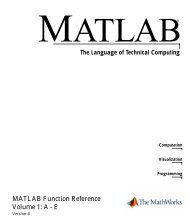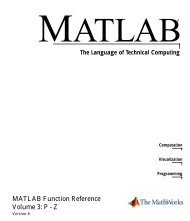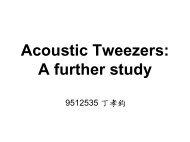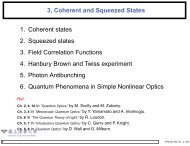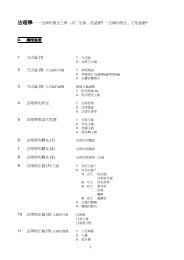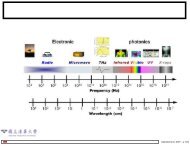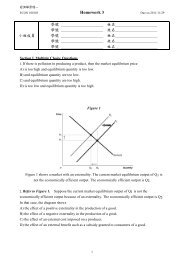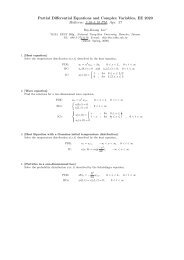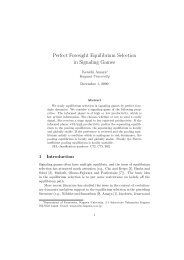Acceleration, Shock and Vibration Sensors
Acceleration, Shock and Vibration Sensors
Acceleration, Shock and Vibration Sensors
You also want an ePaper? Increase the reach of your titles
YUMPU automatically turns print PDFs into web optimized ePapers that Google loves.
Chapter 5<br />
Piezoresistive Accelerometers<br />
Single-crystal silicon is also often used in manufacturing accelerometers. It is an<br />
anisotropic material whose atoms are organized in a lattice having several axes of<br />
symmetry. The orientation of any plane in the silicon is provided by its Miller indices.<br />
Piezoresistive transducers manufactured in the 1960s first used silicon strain gages<br />
fabricated from lightly doped ingots. These ingots were sliced to form small bars or<br />
patterns. The Miller indices allowed positioning of the orientation of the bar or pattern<br />
with respect to the crystal axes of the silicon. The bars or patterns were often bonded<br />
directly across a notch or slot in the accelerometer flexure. Figure 5.2.9 shows short,<br />
narrow, active elements mounted on a beam. The large pads are provided for thermal<br />
power dissipation <strong>and</strong> ease of electrical <strong>and</strong> mechanical connections. The relatively<br />
short web avoids column-type instabilities in compression when the beam bends in<br />
either direction. The gages are subsequently interconnected in a Wheatstone bridge<br />
configuration. This fact that the gages are configured in a bridge indicates that piezoresistive<br />
accelerometers have response down to DC (i.e., they respond to steady-state<br />
accelerations).<br />
Since the late 1970s we have encountered a continual evolution of microsensors into<br />
the marketplace. A wide variety of technologies are involved in their fabrication. The<br />
sequence of events that occurs in this fabrication process are: the single crystal silicon<br />
is grown; the ingot is trimmed, sliced, polished, <strong>and</strong> cleaned; diffusion of a dopant<br />
into a surface region of the wafer is controlled by a deposited film; a photolithography<br />
process includes etching of the film at places defined in the developing process,<br />
followed by removal of the photoresist; <strong>and</strong> isotropic <strong>and</strong> anisotropic wet chemicals<br />
are used for shaping the mechanical microstructure. Both the resultant stress distribution<br />
in the microstructure <strong>and</strong> the dopant control the piezoresistive coefficients of the<br />
silicon.<br />
Electrical interconnection of various controlled surfaces formed in the crystal, as well<br />
as bonding pads, are provided by thin film metalization. The wafer is then separated<br />
into individual dies. The dies are bonded by various techniques into the transducer<br />
housing, <strong>and</strong> wire bonding connects the metallized pads to metal terminals in the<br />
transducer housing. It is important to realize that piezoresistive accelerometers manufactured<br />
in this manner use silicon both as the flexural element <strong>and</strong> as the transduction<br />
element, since the strain gages are diffused directly into the flexure. Figures 5.2.10<br />
<strong>and</strong> 5.2.11 show typical results of this fabrication process.<br />
144



